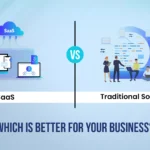
In the digital age, software is an integral part of our daily lives, impacting everything from the apps on our smartphones to the systems that run multinational corporations. But what exactly is software, and why is it so crucial? This article provides a comprehensive overview of software, its types, uses, and importance in modern technology, along with how it continues to evolve.
What is Software?
Software is a set of instructions, data, or programs used to operate computers and execute specific tasks. It’s the counterpart to physical hardware, enabling users to interact with their devices through applications, operating systems, and more. In simple terms, software tells a computer what to do, turning hardware into a functional tool.
The Evolution
The history of software dates back to the 1940s when early computers relied on manually coded instructions to function. As technology progressed, software development evolved from simple code-based programs to complex systems and applications. Today, software is everywhere—from operating systems and business applications to mobile apps and artificial intelligence systems.
Types of Software
Software is typically divided into several categories, each serving different purposes. Here are the primary types of software:
- System Software: This includes the operating systems and utilities that manage and support a computer’s basic functions.
- Application Software: Designed for end-users, this category includes word processors, games, and business applications.
- Development Software: These are tools used by developers to write, test, and deploy software applications.
- Embedded Software: Found in devices like microwaves, cars, and other machinery, it controls specific functions in hardware.
The Foundation of Digital Operations
System software acts as a bridge between hardware and user applications. It includes:
- Operating Systems (OS): Essential for any computer, operating systems manage hardware, memory, and resources. Examples include Windows, macOS, and Linux.
- Utilities: These are specialized programs designed to manage, maintain, and control computer resources. Examples include antivirus software, disk cleanup tools, and backup utilities.
System software is crucial because it provides a stable environment for application software to run smoothly and efficiently.
The Tools We Use Daily
Application software is designed to perform specific tasks for users, from creating documents to playing games. Key categories include:
- Productivity Software: Tools like Microsoft Office and Google Workspace allow users to create documents, spreadsheets, and presentations.
- Media Software: Applications for editing photos, videos, and audio, such as Adobe Photoshop and Final Cut Pro.
- Educational Software: Programs that facilitate learning, like language learning apps and academic software.
- Entertainment Software: Video games, streaming services, and other leisure applications.
Application software enhances productivity, entertainment, and creativity, making it an essential part of modern life.
Programming and Development Software: The Creators’ Toolkit
For software developers, programming and development tools are critical. These include:
- Integrated Development Environments (IDEs): Software like Visual Studio and Eclipse provides a platform for coding, debugging, and testing.
- Version Control Software: Tools like Git help developers track and manage changes to code over time.
- Database Management Systems (DBMS): Software like MySQL and Oracle allows developers to create, manage, and manipulate databases.
Development software enables programmers to build and maintain applications, systems, and other software solutions.
The Hidden Force in Everyday Devices
Embedded software is designed to run on specific hardware devices, usually for a single purpose. It is found in:
- Automobiles: Controls functions like engine management, entertainment systems, and navigation.
- Household Appliances: Embedded software powers microwaves, washing machines, and other smart appliances.
- Medical Devices: Essential for monitoring and controlling medical equipment.
While often unnoticed, embedded software is critical for the operation of various electronic devices, making everyday tasks more convenient.
Development Process
Creating software involves several stages, commonly known as the Software Development Life Cycle (SDLC):
- Requirement Gathering: Understanding user needs and determining software objectives.
- Design: Outlining the software’s architecture and functionality.
- Development: Coding the software according to design specifications.
- Testing: Ensuring the software is functional and bug-free.
- Deployment: Releasing the software to users.
- Maintenance: Updating and refining the software over time.
Each phase is essential for creating reliable, user-friendly software that meets user expectations.
Importance of Software Testing
Testing is a critical part of software development, ensuring that the product works as intended. Common types of testing include:
- Unit Testing: Tests individual components of the software.
- Integration Testing: Checks how different components work together.
- User Acceptance Testing (UAT): Ensures the software meets user requirements.
By identifying issues before release, testing helps create a smooth user experience and enhances software reliability.
The Impact of Software on Industries
Software is at the core of nearly every industry, transforming operations and enabling new possibilities:
- Healthcare: Software enables patient record management, telemedicine, and diagnostic tools.
- Finance: Banking and financial services rely on software for transactions, trading, and compliance.
- Retail: E-commerce platforms, inventory management, and customer analytics depend on sophisticated software.
- Education: Online learning platforms and educational apps make education more accessible worldwide.
Emerging Trends and Technologies
Software continues to evolve, with several key trends shaping its future:
- Artificial Intelligence (AI): AI-powered software is becoming more prevalent, automating tasks and enhancing data analysis.
- Cloud Computing: Software delivered via the cloud allows for scalability and flexibility, making it accessible to users worldwide.
- Internet of Things (IoT): IoT software enables connectivity between devices, creating smarter homes and cities.
- Blockchain Technology: Emerging as a secure way to record transactions, blockchain software has implications for finance, healthcare, and beyond.
- Augmented and Virtual Reality (AR/VR): These technologies are transforming gaming, education, and even training programs in various industries.
As technology advances, software will continue to play a central role in reshaping the way we live and work.
Choosing the Right Software for Your Needs
When selecting software, consider the following factors:
- Purpose: Define the tasks you need the software to accomplish.
- Compatibility: Ensure the software is compatible with your existing systems.
- User-Friendly Interface: Look for software with a straightforward, intuitive design.
- Cost: Compare pricing models and consider both upfront and long-term costs.
- Support: Choose software providers that offer robust customer support.


















